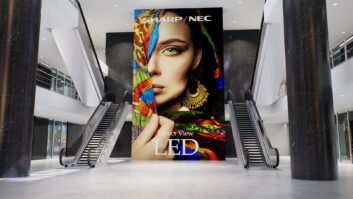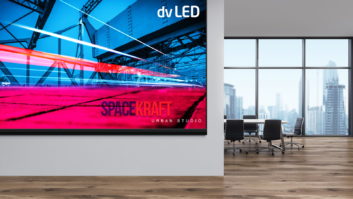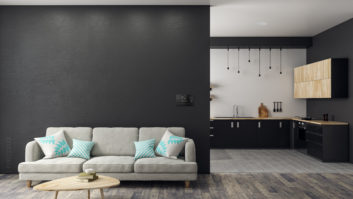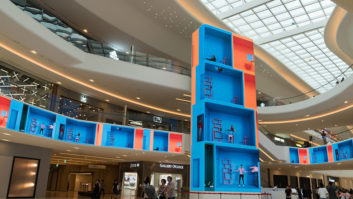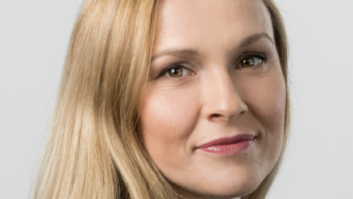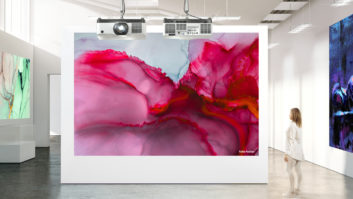Philippe Starck included thirteen 103in plasma screens into his high profile redesign of the flagship Paradis du Fruit restaurant on Avenue Georges V in Paris
Large format display architectural applications are limited only by the ambition of designers, says Enrique Robledo
Art and technology should not be regarded as mutually exclusive and the introduction of very large displays mean that flat screen technology can be used in much more interesting ways than for signage or as glorified digital picture frames. The recent installation of a 103” plasma screen as a centrepiece to the art deco foyer of RIBA’s London headquarters is an endorsement of how large format flat displays can be tastefully integrated into public spaces.
Architects and interior designers are starting to see the potential in using 65in plus screens for applications beyond digital signage. This is perhaps best exemplified by Philippe Starck’s decision to build thirteen 103in plasma screens into his high profile redesign of the flagship Paradis du Fruit restaurant on Avenue Georges V in Paris. Philippe Starck’s revamped interior integrates the displays into the decor to become part of the glass, aluminium and stainless steel design which is intended to be neutral enough to remain timeless and viable as a long-term investment.
The plasma screens are positioned to be visible from all tables but fit into the space harmoniously so they do not dominate it. Starck wished to immerse diners in an almost aquatic experience that would create a calm and soothing ambience to communicate the values of health and vitality that the restaurant stands for. To fulfil this vision the designer used back lighting on images of fruit in conjunction with animations of various fruits plunging into water in slow motion on the full HD screens as envisaged by graphic designer Thibaut Mathieu to augment the sub-aqua aesthetic.
Finally a sound collage by Stephan Crasneanski was commissioned to complement the visuals. If used sympathetically within architectural design, large format screens can be used to enhance ambience, create a sense of space and scale within commercial architecture, museums and other public spaces. We would hope that now high profile names in the industry, such as Starck, are recognising the potential for very large screens we’ll see them being used in ever more creative and exciting ways. As these displays become ever lighter and more flexible their applications will be limited only by the ambitions of designers.
Enrique Robledo is display marketing manager at Panasonic PVDE
